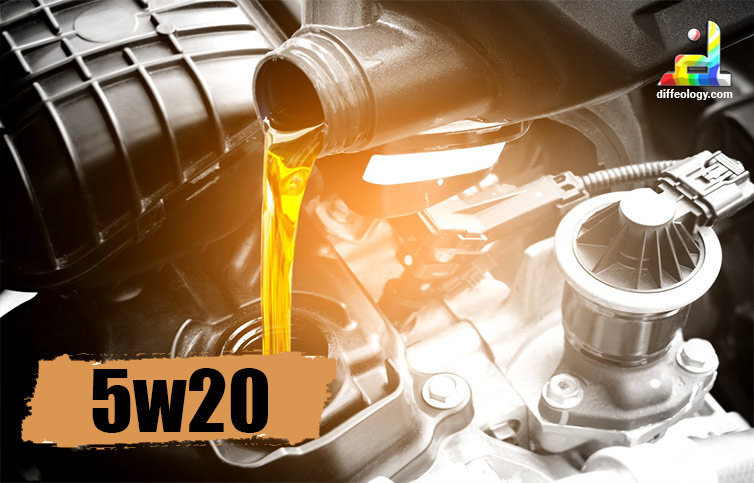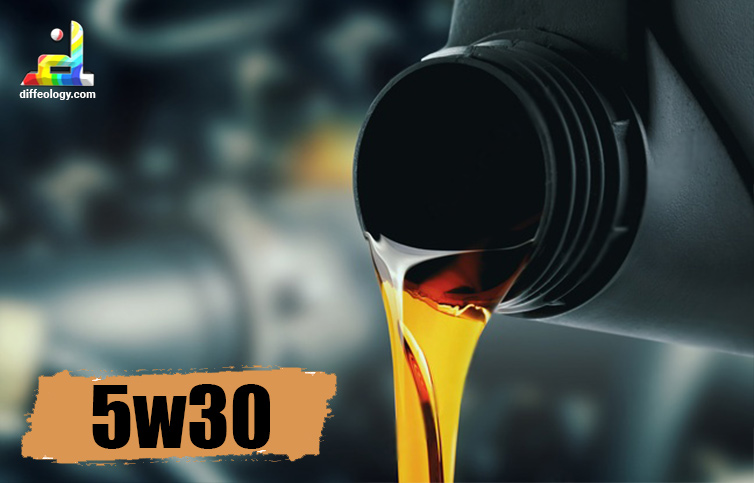Let’s dive under the hood and explore the fascinating world of motor oils—specifically, the difference between 5W20 and 5W30. Picture this: your engine is like the heart of your car, pumping life into its every move. But just like our bodies need the right fuel to keep going strong, engines need the right oil to stay healthy. Now, imagine these motor oils as superheroes, each with its unique powers and strengths. 5W20 and 5W30 might sound like code words from a secret agent movie, but they’re actually grades of oil that determine how they perform in your engine, especially at different temperatures. So, buckle up and get ready to uncover the secrets behind these two motor oil heroes!
Main Difference Between 5w20 and 5w30
The main difference between 5W20 and 5W30 motor oils lies in their viscosity grades. They affect how they behave in different temperatures. 5W20 is thinner. It makes it better for cold starts and improves fuel efficiency. It is commonly found in newer car models. On the other hand, the 5W30 is slightly thicker. So, it provides better engine protection in high temperatures and under heavy loads. It is often preferred for older engines or vehicles with higher mileage.
5w20 Vs. 5w30
What is 5w20?
5W20 is a type of motor oil that’s commonly used in cars and trucks. The “5W” part of its name tells us how the oil behaves in different temperatures. Imagine your engine as a superhero’s lair—it can get really cold in there during winter! The “5” means that this oil flows easily when it’s cold, just like water. So, when you start your car on a chilly morning, 5W20 oil moves quickly through the engine, making sure everything stays lubricated and running smoothly.
Read Also: Difference Between Motor and Engine
Now, let’s talk about the “20” part. This number tells us how thick or thin the oil is when the engine is hot. Think of it like syrup—it’s a bit thicker. So, when your engine heats up during normal driving or on a hot summer day, 5W20 oil still keeps flowing smoothly, protecting your engine from wear and tear. Many car manufacturers recommend using 5W20 oil because it helps improve fuel efficiency and reduces engine wear, keeping your car running like a champ for longer. So, next time you’re getting an oil change, if your car needs 5W20, you’ll know it’s like giving your engine its favorite superhero shield to keep it safe and strong!
What is 5w30?
5W30 is another type of motor oil that’s used in cars and trucks, just like 5W20. But what makes it different? Well, let’s break it down. The “5W” part of its name tells us about its viscosity, which is how thick or thin the oil is. Think of viscosity like the syrup you put on pancakes—5W30 is a bit thicker than 5W20. This means that when your engine starts up in the cold, 5W30 oil still flows well enough to keep everything moving smoothly. It’s like giving your engine a warm blanket to stay cozy even on frosty mornings.
Read Also: Difference Between Heat and Temperature
Now, onto the “30” part. This number tells us how the oil behaves when the engine is hot. Remember that syrup analogy? Well, 5W30 oil is a little thicker than 5W20 when the engine heats up. This extra thickness helps protect your engine’s parts from wear and tear, especially when you’re driving fast or carrying heavy loads. Many cars and trucks, especially those with older engines or ones that need a bit more muscle, use 5W30 oil to keep everything running smoothly. So, think of 5W30 oil as your engine’s trusty sidekick, ready to tackle whatever adventures the road throws its way!
Comparison Table “5W20 Vs. 5W30”
| Viscosity Grade | Thinner oil | Slightly thicker oil |
| Engine Protection | Good for cold starts, smaller parts | Better for high temperatures, heavy loads |
| Fuel Efficiency | May save more fuel | Slightly less fuel efficiency |
| Cold Weather Performance | Flows well in cold weather | Also flows well in cold weather |
| Hot Weather Performance | Slightly thinner at high temperatures | Slightly thicker at high temperatures |
| Engine Wear | Reduces wear during cold starts | Protects against wear under high stress |
| Manufacturer Recommendations | Recommended for newer engines | Often preferred for older engines |
| Cost | Often cheaper | Slightly more expensive |
| Environmental Impact | Potential for better fuel economy | Slightly more emissions under heavy loads |
| Compatibility with Older Engines | Less preferred for older engines | Often preferred for older engines |
| Common Usage | More common in newer cars | Also used in newer and older vehicles |
| Performance under Load | Suitable for regular driving | Better for towing, heavy loads |
| Oil Change Intervals | Varied based on vehicle and manufacturer | Varied based on vehicle and manufacturer |
| Availability | Widely available | Less common in some regions |
| Government Regulations | Compliance varies | Compliance varies |
| Synthetic vs. Conventional | Available in both forms | Available in both forms |
| Personal Preference | Depends on driver’s experiences and needs | Depends on driver’s experiences and needs |
Difference Between 5w20 and 5w30 in Detail
Viscosity Grade:
Imagine your engine’s oil as a superhero, fighting off friction and keeping your car’s engine running smoothly. Both 5W20 and 5W30 oils are like two different superheroes with slightly different strengths. The numbers “5W” represent the oil’s viscosity grade, with the “W” standing for winter. The lower the number, the thinner the oil behaves in cold temperatures. So, 5W20 oil is a bit thinner at cold temperatures compared to 5W30. Think of it like the difference between water and syrup. Water (5W20) flows more easily in cold temperatures, while syrup (5W30) is a bit thicker.
Engine Protection:
Just like how you wear armor when you’re playing knights and dragons, your car’s engine needs protection too. Both 5W20 and 5W30 oils are good at protecting your engine, but they do it in slightly different ways. 5W20 oil is thinner, so it flows more easily through your engine’s smaller parts, like tiny pipes and passages. On the other hand, 5W30 oil, being a bit thicker, might offer slightly better protection for your engine’s components at high temperatures or under heavy loads, like when towing a trailer or driving uphill.
Fuel Economy:
Saving fuel is like saving coins for your favorite video game. Both 5W20 and 5W30 oils can help with fuel economy, but one might be a little better than the other. 5W20 oil, being thinner, can help your engine run more efficiently, especially during cold starts, which is when most fuel is used. So, if you want to squeeze out every last drop of fuel efficiency, 5W20 might be the better choice.
Temperature Range:
Think of your engine as a superhero’s lair—it can get really hot in there! Both 5W20 and 5W30 oils can handle the heat, but one might handle it a bit better. 5W30 oil, being slightly thicker, can handle higher temperatures without thinning out too much. So, if you live in a place where it gets super hot, like the desert, 5W30 might be a better choice to keep your engine cool and happy.
Engine Wear:
Just like how you take care of your favorite toys to make them last longer, your car’s engine needs proper care too. Both 5W20 and 5W30 oils can help reduce wear on your engine’s parts, but they do it differently. 5W20 oil, being thinner, might offer better lubrication during cold starts, reducing wear on the engine when it’s most vulnerable. However, 5W30 oil might offer slightly better protection at high temperatures or under heavy loads, helping to extend your engine’s lifespan.
Manufacturer Recommendations:
Imagine if your favorite video game had specific rules you had to follow to win. Similarly, car manufacturers recommend specific types of oil for their engines to keep them running smoothly. Some manufacturers might recommend 5W20 oil for better fuel economy, while others might prefer 5W30 for better high-temperature performance. Always check your car’s manual or consult with a mechanic to know which oil is best for your engine.
Cost:
Money matters, especially when you’re saving up for that cool new toy. Both 5W20 and 5W30 oils are readily available, but their prices might differ. Typically, 5W20 oil tends to be a bit cheaper than 5W30 oil because it’s produced in larger quantities and used in more vehicles. So, if you’re looking to save a few bucks without compromising on performance, 5W20 might be the way to go.
Environmental Impact:
Just like how you try to reduce your carbon footprint by recycling, the type of oil you choose can also have an impact on the environment. Thinner oils like 5W20 usually contribute to better fuel economy, which means less fuel consumption and fewer emissions. So, if you’re eco-conscious, choosing 5W20 oil might align better with your values.
Compatibility with Older Engines:
Imagine trying to play your newest video game on an old gaming console—it might not work as smoothly. Similarly, older car engines might have different requirements when it comes to oil. Some older engines might be designed to work better with thicker oils like 5W30, providing better protection for worn-out parts. If you have an older car, it’s essential to check what type of oil is recommended to keep your engine running smoothly for years to come.
Key Difference Between 5w20 and 5w30
- Viscosity Grade: 5W20 is thinner than 5W30.
- Engine Protection: 5W30 may offer better protection in high heat.
- Fuel Efficiency: 5W20 could save more fuel.
- Cold Weather Performance: 5W20 flows better in cold weather.
- Hot Weather Performance: 5W30 may handle high temperatures better.
- Engine Wear: 5W20 may reduce wear during cold starts.
- Manufacturer Recommendations: Some cars work better with 5W20, others with 5W30.
- Cost: 5W20 is often cheaper than 5W30.
- Environmental Impact: 5W20 might be more eco-friendly due to better fuel economy.
- Compatibility with Older Engines: Older engines may prefer 5W30 for better protection.
- Common Usage: 5W20 is more commonly used in newer cars.
- Performance under Load: 5W30 might perform better when towing or carrying heavy loads.
- Oil Change Intervals: Depending on the car, oil change intervals might vary between 5W20 and 5W30.
- Availability: 5W20 is more widely available due to its common usage.
- Government Regulations: Some countries may have regulations favoring one type over the other.
- Synthetic vs. Conventional: Both 5W20 and 5W30 come in synthetic and conventional forms, with different properties.
- Personal Preference: Some drivers might prefer one over the other based on their experiences.
FAQs: 5w20 Vs. 5w30
Conclusion:
From cold starts to scorching summers, these oils work tirelessly to keep your engine running smoothly. Whether you’re cruising down the highway or embarking on a rugged adventure, choosing the right oil can make all the difference in your car’s performance and longevity. For this purpose, you should know the Difference Between 5w20 and 5w30. So, next time you’re due for an oil change, remember to consider the unique needs of your engine and pick the oil that’s best suited for the job. After all, with 5W20 and 5W30 by your side, you can hit the road with confidence, knowing that your engine is in good hands—literally!
References & External Links
- Car Engine Oil Types: Advantages, Disadvantages & More
- Discover 7 Car Oil Type for Better Vehicle Engines!



